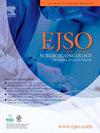Hyperthermic intraperitoneal chemotherapy (HIPEC) for primary advanced-stage or recurrent ovarian cancer: A systematic review and meta-analysis of randomized control trials
IF 2.9
2区 医学
Q2 ONCOLOGY
引用次数: 0
Abstract
Background
Ovarian cancer has the highest mortality among gynecologic malignancies. Despite cytoreductive surgery (CRS) and systemic therapy, peritoneal recurrence remains common. Hyperthermic intraperitoneal chemotherapy (HIPEC) delivers heated chemotherapy directly to the peritoneal cavity, enhancing local cytotoxicity and offering a potential therapeutic strategy.
Methods
We searched PubMed, Embase, and Cochrane for randomized controlled trials (RCTs) comparing CRS plus HIPEC versus CRS alone. Hazard ratios (HR), odds ratios (OR), and mean differences (MD) were pooled using Review Manager 5.4. Heterogeneity was assessed using I2 statistics. Primary outcomes were overall survival (OS) and progression-free survival (PFS); secondary outcomes included operative time, Grade 3–5 adverse events, time to adjuvant chemotherapy, and hospital length of stay (LOS). Subgroup analyses were performed for primary vs. recurrent cancer, neoadjuvant chemotherapy (NACT) vs. no NACT, HIPEC duration (60 vs. 90 min), and high-grade serous vs. other histologies.
Results
Eight RCTs (1259 patients) were included; 636 (50.52%) received CRS with HIPEC. HIPEC significantly improved OS (HR 0.79; 95% CI 0.67–0.94; p = 0.006; I2 = 9%), especially in primary ovarian cancer (HR 0.75; 95% CI 0.60–0.94; p = 0.01; I2 = 0%). No OS benefit was observed in recurrent disease (HR 0.87; 95% CI 0.63–1.19; p = 0.38; I2 = 39%). PFS showed no overall difference (HR 0.86; p = 0.30). HIPEC increased operative time (MD 127.75 min; p < 0.00001), LOS (MD 1.49 days; p = 0.03), and Grade 3–5 adverse events (OR 1.50; p = 0.03).
Conclusions
In ovarian cancer, HIPEC significantly improved OS, especially in primary disease and following NACT. However, increased morbidity was observed. Further studies should refine patient selection and optimize protocols.
腹腔高温化疗(HIPEC)治疗原发性晚期或复发性卵巢癌:随机对照试验的系统回顾和荟萃分析
背景:卵巢癌是妇科恶性肿瘤中死亡率最高的。尽管细胞减少手术(CRS)和全身治疗,腹膜复发仍然很常见。高温腹腔化疗(HIPEC)将加热的化疗直接输送到腹腔,增强局部细胞毒性,提供了一种潜在的治疗策略。方法我们检索PubMed、Embase和Cochrane检索比较CRS联合HIPEC与单独CRS的随机对照试验(rct)。使用Review Manager 5.4汇总风险比(HR)、优势比(OR)和平均差异(MD)。采用I2统计量评估异质性。主要结局是总生存期(OS)和无进展生存期(PFS);次要结局包括手术时间、3-5级不良事件、辅助化疗时间和住院时间(LOS)。对原发性与复发性癌症、新辅助化疗(NACT)与非NACT、HIPEC持续时间(60分钟vs 90分钟)、高级别浆液性与其他组织学进行亚组分析。结果共纳入8项rct(1259例);636例(50.52%)接受CRS合并HIPEC。HIPEC显著改善OS (HR 0.79; 95% CI 0.67-0.94; p = 0.006; I2 = 9%),尤其是原发性卵巢癌(HR 0.75; 95% CI 0.60-0.94; p = 0.01; I2 = 0%)。复发性疾病无OS获益(HR 0.87; 95% CI 0.63-1.19; p = 0.38; I2 = 39%)。PFS总体上无差异(HR 0.86; p = 0.30)。HIPEC增加了手术时间(MD 127.75 min; p < 0.00001)、LOS (MD 1.49天;p = 0.03)和3-5级不良事件(OR 1.50; p = 0.03)。结论在卵巢癌中,HIPEC显著改善了OS,尤其是原发性疾病和NACT后的OS。然而,观察到发病率增加。进一步的研究应完善患者选择和优化方案。
本文章由计算机程序翻译,如有差异,请以英文原文为准。
求助全文
约1分钟内获得全文
求助全文
来源期刊

Ejso
医学-外科
CiteScore
6.40
自引率
2.60%
发文量
1148
审稿时长
41 days
期刊介绍:
JSO - European Journal of Surgical Oncology ("the Journal of Cancer Surgery") is the Official Journal of the European Society of Surgical Oncology and BASO ~ the Association for Cancer Surgery.
The EJSO aims to advance surgical oncology research and practice through the publication of original research articles, review articles, editorials, debates and correspondence.
 求助内容:
求助内容: 应助结果提醒方式:
应助结果提醒方式:


